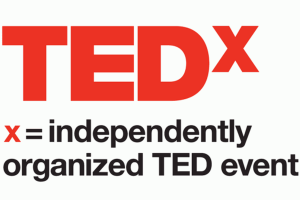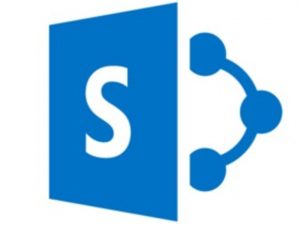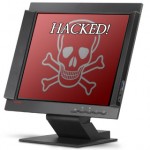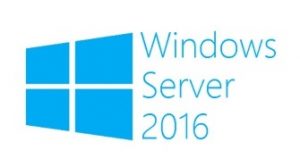 Sadly I don’t have a ‘Service level Agreement’ with anyone. The reason being my business model is so crazy diverse it’s nearly impossible to encompass. Quite literally I seem to support everything 24/7/365 and if I can’t support it I’ll find you someone that can. If nothing ever breaks in your office/company I consider that darn near perfect, I want all my clients to NOT have problems. I really don’t like the companies that thrive on IT misery by billing a fortune for constantly fixing ‘something’ but never any ‘smooth sailing’.
Sadly I don’t have a ‘Service level Agreement’ with anyone. The reason being my business model is so crazy diverse it’s nearly impossible to encompass. Quite literally I seem to support everything 24/7/365 and if I can’t support it I’ll find you someone that can. If nothing ever breaks in your office/company I consider that darn near perfect, I want all my clients to NOT have problems. I really don’t like the companies that thrive on IT misery by billing a fortune for constantly fixing ‘something’ but never any ‘smooth sailing’.
I know that sounds a little weird but IT infrastructure is now printers, cabling, servers (real & virtual), cloud, phones, watches, tablets, copiers, routers, WiFi, email, VPN, RDP and that doesn’t even cover security systems, cameras, cars (yup.. I’ve clients that get Email/Teams/Zoom in their car). A few of my 3 & 4 letter agency clients have me doing towers, encryption, forensics and the occasional ‘white hack’. I can’t fix your fridge remotely but if it needs to connect to the internet to order your milk for the morning coffee, that’s part of my job if you say it is.
Thus.. I will pretty much do anything and everything to the best of my ability as soon as I possibly can or find you someone that will/can. All this for $100/hour (honestly I really need to revisit my rates.. it hasn’t change in nearly 10 years when gas was $0.80/liter) plus one-way travel time (no mileage) if I’m not already planning on being in your area.
How’s that for a ‘Service Agreement’?

 On Saturday April 14, 2018 I presented at the TEDx in Chilliwack, BC. I applied last year, had an audition in January (was accepted as a presenter) then got on stage Saturday.
On Saturday April 14, 2018 I presented at the TEDx in Chilliwack, BC. I applied last year, had an audition in January (was accepted as a presenter) then got on stage Saturday. This is one of those programs you don’t even know you need until you have it. Then you wonder how the heck you functioned without it. You can ‘do the cloud’ or make your own fully controlled on-site system.
This is one of those programs you don’t even know you need until you have it. Then you wonder how the heck you functioned without it. You can ‘do the cloud’ or make your own fully controlled on-site system. Uhmm.. no they didn’t. First off Microsoft isn’t going to call you, or really any other software company (try phoning their tech support and see how long it takes, imagine them actually phoning people proactively to solve problems).
Uhmm.. no they didn’t. First off Microsoft isn’t going to call you, or really any other software company (try phoning their tech support and see how long it takes, imagine them actually phoning people proactively to solve problems). It’s probably that time again. You knew it was coming but that old 2008R2 has been running well or at least it was until recently.
It’s probably that time again. You knew it was coming but that old 2008R2 has been running well or at least it was until recently. Alas Microsoft is in the process of ending the 2008R2 server and Exchange 2010 from regular support and updates (limited support until 2020 but only critical security patches). This means all those companies that have one of these awesome beasties will need an upgrade in 2017 or 2018 (or risk some serious problems).
Alas Microsoft is in the process of ending the 2008R2 server and Exchange 2010 from regular support and updates (limited support until 2020 but only critical security patches). This means all those companies that have one of these awesome beasties will need an upgrade in 2017 or 2018 (or risk some serious problems). Microsoft has a bounty program, which pays if you find a bug and explain why it’s a bug (or exploit). They pay upto $50,000 USD for the information. Yang Yu, founder of Tencent’s Xuanwu Lab has made previous successful bounty claims as well but this one is a whopper. It affects every version of Windows back to Windows 95 (no patches coming for those old OS either).
Microsoft has a bounty program, which pays if you find a bug and explain why it’s a bug (or exploit). They pay upto $50,000 USD for the information. Yang Yu, founder of Tencent’s Xuanwu Lab has made previous successful bounty claims as well but this one is a whopper. It affects every version of Windows back to Windows 95 (no patches coming for those old OS either). Microsoft officially ended the Small Business Server (aka SBS) to the chagrin of many smaller companies wanting in-house control of their data at a reasonable cost. With this move the cost of having an in-house solution for email & data went up by $3000 or more. I’ll explain the changes and how you can make a new SBS that will at least do the same job as before.
Microsoft officially ended the Small Business Server (aka SBS) to the chagrin of many smaller companies wanting in-house control of their data at a reasonable cost. With this move the cost of having an in-house solution for email & data went up by $3000 or more. I’ll explain the changes and how you can make a new SBS that will at least do the same job as before.